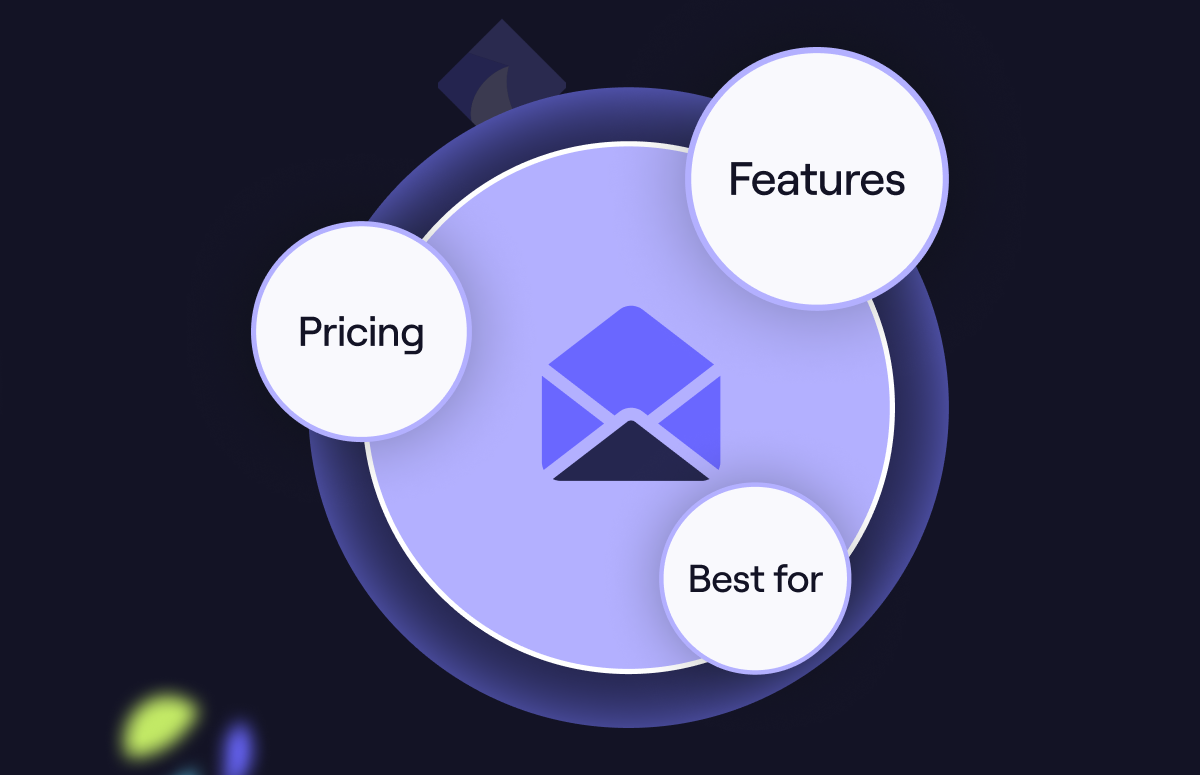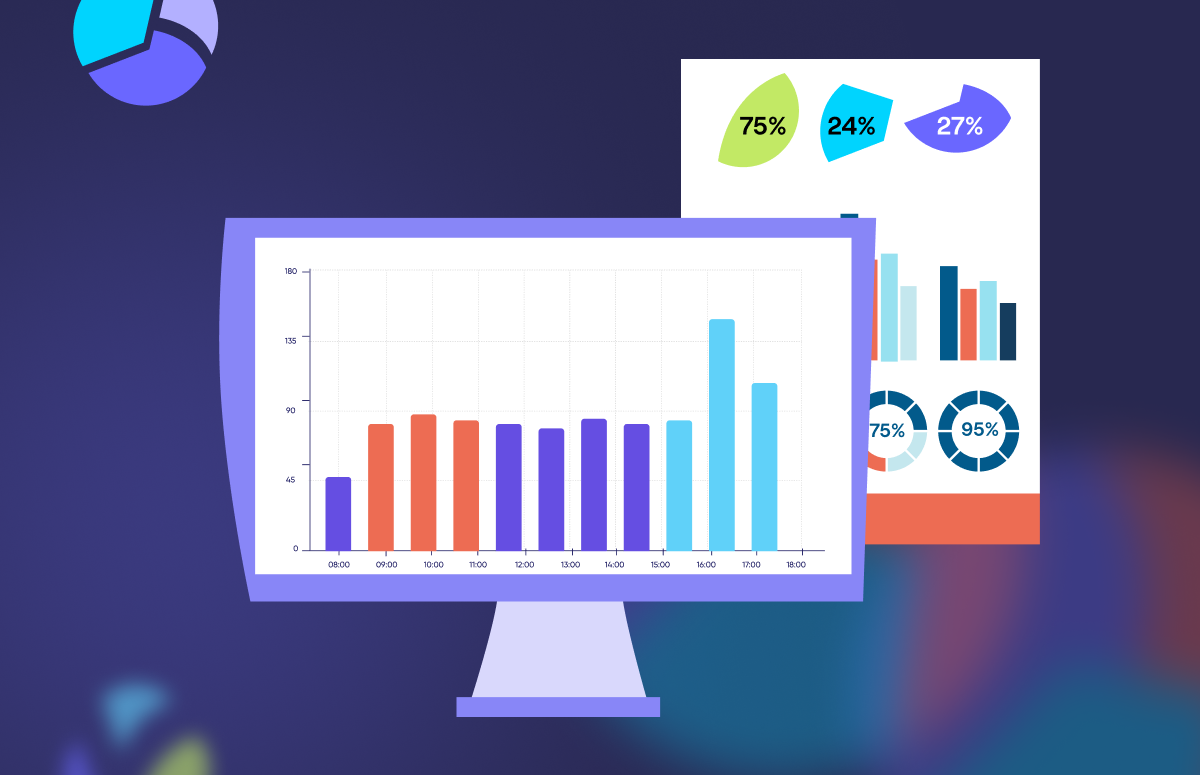11 Proven Strategies to Increase B2B Sales in 2025
11 best ways to improve B2B sales:
There’s no doubt about it: B2B sales is a competitive sport!
Long sales cycles, rising buyer expectations, and new selling techniques mean your sales team needs proven strategies to achieve its business goals.
The wrong strategies can lead to all sorts of problems, up to and including a sharp decline in your bottom line.
Luckily, Cognism’s got you covered!
And we’re making it super-easy - simply scroll 👇 for the best strategies to increase B2B sales.
1. Use data to target the right prospects
You’ve heard the phrase, “Time is money.”
In the movies, it’s a cliche. But for B2B sales professionals, it’s a statement of fact.
If you want to increase your sales opportunities, you need to target the right prospects. And only data - high-quality data - can help you do this.
Connecting with every business on your call list can be tempting, but some of those businesses will never be a good fit for you. Why waste time chasing B2B sales leads who’ll never convert?
Here’s what you must do instead:
- Analyse your current customers, especially those who get the most value out of your solution. Build up your ideal customer profile.
- Use a B2B sales prospecting tool (like Cognism!) to find other promising leads who match your happy customers’ characteristics.
- Focus on high-intent prospects, or those most likely to need your product and services. This will help you drive revenue growth quickly and efficiently.
How Cognism helps
Cognism is a B2B lead generation tool that provides high-quality, compliant data, helping businesses connect with their target customers.
Cognism has one of the most exclusive and accurate B2B datasets on the market, including phone-verified mobile numbers and notified prospect email addresses.
With precise contact details at their fingertips, your sales reps can easily connect with businesses looking for your solutions.
See how Cognism powers the B2B sales process - sign up for a demo below 👇
2. Personalise your outreach
Knowing who your prospects are is just the first step in improving B2B sales. The next challenge?
Grabbing their attention - and this is best done through personalised outreach that speaks directly to their needs.
It’s time to throw your generic sales approaches out the window.
66% of B2B professionals expect the same or better personalisation in digital marketing than in personal experiences.
This is especially true regarding initial outreach: 57% of B2B customers expect personalisation during the discovery phase.
You can use various methods to personalise your outreach. Try the following:
- Keep up with LinkedIn news, company updates, and industry trends. Mention them in your personal email outreach or connection requests.
- Reference your target customer’s specific needs and pain points.
- Use clear, concise messaging to deliver the most impact.
Tailoring your outreach messaging to your prospective customers goes a long way! A well-crafted message can open doors before you even make a cold call.
That said, even the best outreach won’t be effective if you have misaligned sales and marketing teams.
Which brings us to the next B2B sales strategy 👇
3. Align sales and marketing
If you want to have long-term success in B2B sales, then your sales and marketing teams must be on the same page.
Your sales and marketing departments share the same goal: increasing revenue. However, when they’re not aligned, chaos and friction reign!
Aligning marketing and sales makes the whole buyer journey smoother and ensures:
- Your sales representatives receive qualified leads from marketing.
- The marketing department understands customer feedback and adjusts its strategies accordingly.
- Both teams use consistent messaging across the board.
Uniting your sales and marketing is vital to expanding your reach. A disconnected approach leads to missed sales opportunities and confusion for your B2B buyers.
When these two crucial teams work in harmony, you’re prepping your B2B business for long-term success.
For more info, check out Cognism’s guide to making sales and marketing work better together.
4. Implement multi-channel prospecting
Cold calling is great, but your prospects aren’t always hanging on the telephone! Plus, according to some studies, cold calling is only about 2% effective.
This is why you need a solid multi-channel prospecting strategy that includes social media and email.
Social selling and email campaigns are top B2B lead generation strategies. They open up your outreach and deepen rapport; if you can’t find someone on the phone, chances are you will on social media or email.
For example, when your reps are active on LinkedIn, they:
- Bring positive awareness to your brand.
- Build stronger relationships with prospects.
Building relationships on multiple platforms is crucial. It’s a key tenet of lead nurturing, where you warm leads up slowly over time. And when potential customers start to engage with your brand, you get one step closer to increasing sales and reaching your revenue goals.
But, if your sales team is slow to respond or interact with prospects, you have a problem. Engaging leads quickly can make the difference between closing a deal or losing it to a competitor.
Which brings us neatly to the next strategy! 👇
5. Speed up your lead response time
To really increase B2B sales, you have to engage with potential buyers as quickly as possible.
A Harvard Business Review study suggests the average lead response time for B2B brands is over 40 hours. That’s enough time for your prospects to forget why they engaged with your brand in the first place.
So, instead of dragging your feet to reach out to a prospect, consider connecting within the first five minutes of their initial interaction.
Okay, you might not have the staff to connect with new interactions personally. But let us help you out with these strategic ways of reducing your lead response time:
- Automate lead routing so your reps are instantly connected to hot leads.
- Set up notifications when your ideal B2B buyer engages with your site.
- Use intent data to pinpoint when potential clients are ready to explore your solution.
Immediate connections speed up the B2B sales cycle, helping your team hit their sales goals.
Although reducing your lead time is essential, ongoing engagement is just as important. If you want to stay fresh in your prospects’ minds, consider social selling 👇
6. Implement social selling
If your sales reps aren’t on Linkedin, what are you waiting for? It’s a goldmine for B2B social selling.
The best reps understand LinkedIn is more than a job-search platform. Instead of looking for new roles, they use it to engage with prospects.
LinkedIn makes it easy to:
- Build personal brands to become the go-to resource for prospects in your industry.
- Engage with prospects through commenting and DMs.
- Use Sales Navigator to identify B2B leaders and decision-makers.
Once your team successfully engages a prospect on LinkedIn, it’s just a matter of bringing them off the platform and into your sales funnel.
However, not every potential customer is ready to say yes. They have questions. Once you’ve built a solid connection, it’s time to shift the conversation to the value your product or service provides.
Which means you have to...
7. Focus on value selling
You know your product’s features are top-tier. But, as great as the features are, they’re not what sells it.
Buyers care less about what your product does. Instead, they care about how your product or service solves their problems.
This is why you need to focus on value selling: dig into your customer data, analyse your customer feedback, and truly understand their pain points.
To sell value, your reps should:
- Focus on the specific challenges your product or service addresses.
- Highlight the ROI.
- Share customer success stories and testimonials.
Without knowing what your customers need, your sales and marketing efforts will likely fail.
Improving B2B sales also involves perfecting your timing - which means you need a strong lead nurturing strategy.
Scroll 👇 to find out more.
8. Nurture your leads effectively
Patience is a virtue in sales, especially since most B2B leads don’t buy immediately. Here’s a hard truth: the average sales cycle is 2+ months.
This is why lead nurturing is crucial to increasing B2B sales.
Once your sales team engages a prospect, they should make a consistent effort to:
- Thoughtfully send valuable and relevant content, like a case study or industry report.
- Keep in touch through regular email check-ins.
- Stay connected on LinkedIn and interact with their posts.
- Schedule sales follow-ups when engagement signals come in.
Doing all of this will keep your brand at the forefront of your prospects’ minds. When they’re ready to make a purchase, your brand will be the first one they remember.
Manually tracking and nurturing every lead can be time-consuming, though, which means having the right sales tech stack is essential 👇
9. Enhance your sales tech stack
Sales reps spend only about two hours of their day actively selling. The rest of their time is spent on admin and researching prospects.
But it doesn’t have to be this way. B2B sales tools speed up the process, enabling reps to do what they do best: sell.
Use dedicated software developers to support your sales efforts. Your team needs a variety of tools:
- A CRM for keeping track of customer interactions.
- Sales engagement tools for managing outreach and follow-ups.
- Sales intelligence tools for improving prospecting with high-quality data.
Without a solid tech stack, your team will waste valuable time on activities that will never increase sales.
But finding B2B sales success isn’t just about technology. Your team, your people, are just as important if not more so.
How can you help them improve sales? You need to...
10. Improve sales enablement
Sales enablement is the process of providing your team with the resources they need to close more deals.
The resources can take many forms, but the most popular are:
- Sales playbooks, competitive battle cards, and persona-based messaging frameworks.
- Continuous sales training, including objection-handling techniques and real-world role-playing exercises.
- Sales-related content marketing such as case studies, whitepapers, and one-pagers tailored to different buyer personas.
Work with your marketing and product management teams to keep your sales enablement resources relevant and up-to-date.
Regarding team coaching, get your sales managers to offer a variety of training methods. Mentoring and role-playing are vital, but you should also document your sales processes. Build up a library of valuable content you can share with new recruits, helping them get up to speed and selling quickly.
Great tech and well-trained staff are essential for boosting B2B sales performance.
But what’s the missing piece of the puzzle?
Great data! 👇
11. Find and close deals faster with Cognism
If you want better data, your sales team needs Cognism.
Cognism gives B2B sales pros a competitive advantage while staying compliant with global laws such as the GDPR. It also eliminates the guesswork of which prospects to target.
Here’s how Cognism improves sales:
- It provides intent data to help your team target prospects looking for your solutions.
- It uncovers phone-verified mobile numbers to make cold calling more effective.
- It notifies your team of sales triggers, such as job changes and funding rounds, so that they can engage with prospects at the best times.
The result? More meetings booked, more closed deals, and less time wasted on bad leads.
Click 👇 to talk to us today.


